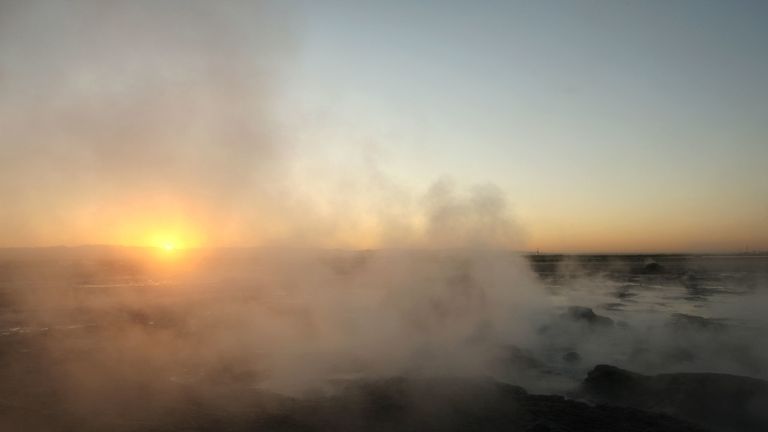NASA study recreates the origins of life on ocean floor
Scientists reproduce the conditions of thermal vents on the ocean floor, where life is thought to have begun.
Tuesday 26 February 2019 18:32, UK
NASA scientists have recreated the conditions which could have given birth to life itself at the bottom of the ocean four billion years ago.
The origins of life are still a mystery, although researchers have a good idea of how inanimate matter came to self-replicate and begin to form cells, the basic unit of life.
In a new study, astrobiologists at NASA are examining how the ingredients for life could also lead to it developing on alien planets.
Dr Laurie Barge and her team recreated the hydrothermal vents on the floor of Earth's primordial ocean, which is where the basic building-blocks of life are believed to originate.
To recreate these vents, the team made their own miniature sea floors by filling beakers with mixtures that mimicked the chemical composition of the ancient ocean.
These laboratory oceans were used as nurseries to see if they could hold the conditions in which amino acids could develop - the crucial organic compounds that come together to form proteins.
"Understanding how far you can go with just organics and minerals before you have an actual cell is really important for understanding what types of environments life could emerge from," said Dr Barge.
As the lead investigator and the first author on the new study, which published in the journal Proceedings of the National Academy of Sciences, Dr Barge said the research was certainly aimed at looking for life elsewhere.
"Also, investigating how things like the atmosphere, the ocean and the minerals in the vents all impact this can help you understand how likely this is to have occurred on another planet," Dr Barge added.
Hydrothermal vents are found around cracks in the sea floor, where natural chimneys form to release fluid heated from beneath Earth's crust.
The energy going into these vents means that the chimneys create a very dynamic environment when they interact with the seawater.
Researchers believe that this dark and warm environment - powered by chemical energy from the Earth - may be how life forms on worlds far away from the sun's heat.
"If we have these hydrothermal vents here on Earth, possibly similar reactions could occur on other planets," added Dr Erika Flores, one of the study's co-authors.
The scientists used ingredients which would have been present in the primordial ocean in their experiments, and heated the beakers to the same temperatures found near thermal vents.
They found that the conditions similar to early Earth's and potentially those of other planets, it is possibly to form amino acids and alpha hydroxy acids from a simple reaction in mild conditions.
Among the contenders in our own solar system for these conditions are Jupiter's moon Europa and Saturn's moon Enceladus which could have hydrothermal vents in the oceans beneath their icy crusts
"We don't have concrete evidence of life elsewhere yet," said Dr Barge.
"But understanding the conditions that are required for life's origin can help narrow down the places that we think life could exist."
The study follows another in which researchers observed a single-celled organism evolve into a multi-celled one in a laboratory, recreating one of the most important leaps in evolutionary history.





